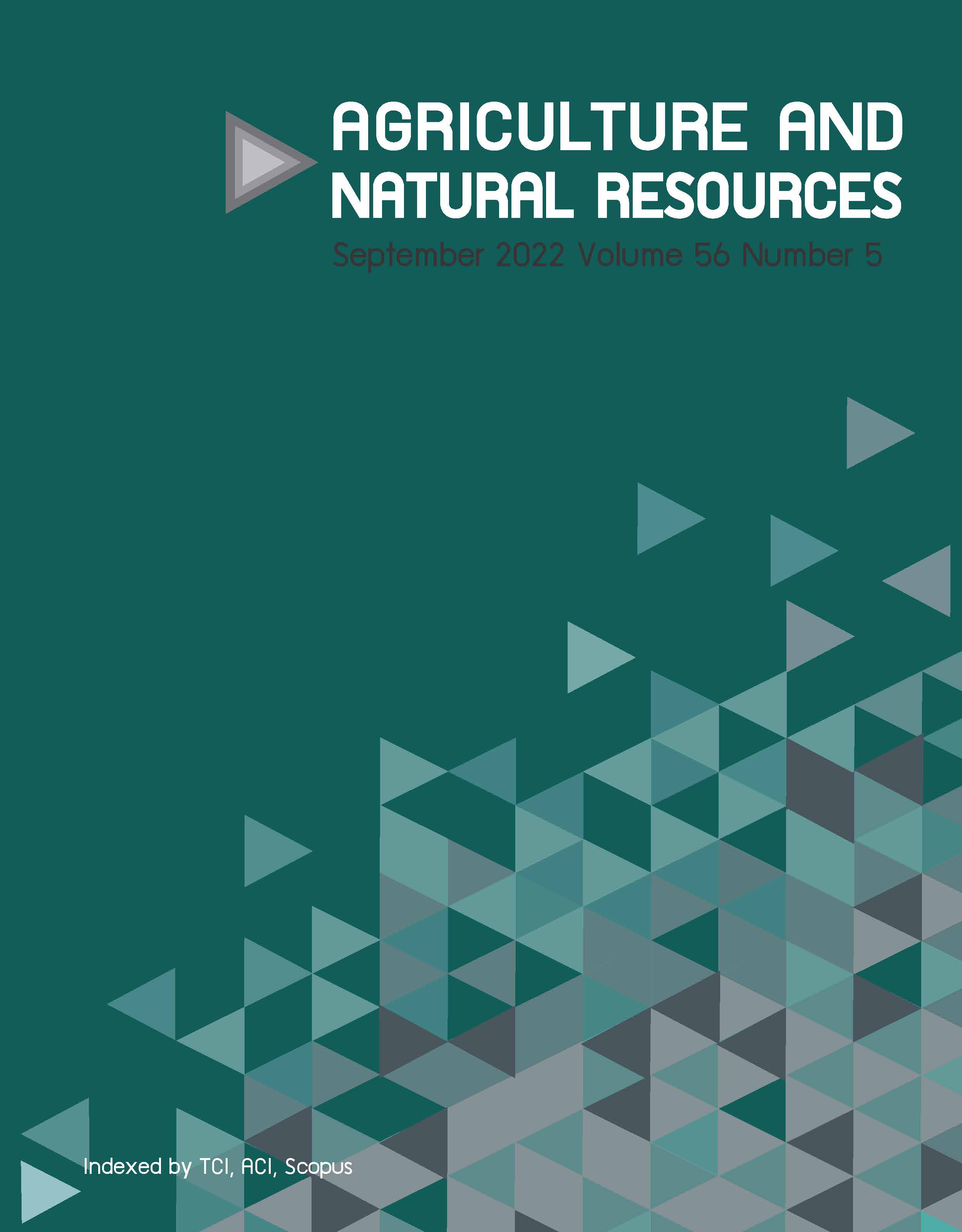Effects of ammonia, temperature and their interaction on oxygen consumption rate of Asian seabass (Lates calcarifer) juveniles
Keywords:
Barramundi, Global warming effect, Intensive aquaculture, Nitrogenous waste, Oxygen uptakeAbstract
Importance of the work: Global warming presents a major challenge to intensive aquaculture and live fish transportation, due to its effects on oxygen consumption (OC) and total ammonia nitrogen; therefore, investigation is necessary of the interaction between these parameters.
Objectives: To evaluate the interaction effect of temperature and total ammonia nitrogen (TAN) on the oxygen consumption rate (OCR) of Asian seabass (Lates calcarifer) juveniles.
Materials & Methods: The OCR of Asian seabass juveniles (mean weight ± SD of 8.09 ± 0.30 g and mean length ± SD of 7.25 ± 0.45 cm) were measured at three temperatures (29 °C, 32 °C and 36 °C) and three TAN levels (0 mg/L, 0.5 mg/L and 1.0 mg/L). The OC levels of fish in a respiratory chamber were measured, from which their OCRs were calculated.
Results: This study was the first to show the interaction of temperature and TAN on the OCR of Asian seabass, which was highly significant (F = 7.449, df = 4, p = 0.001). The presence of TAN (0.5–1.0 mg/L) enhanced the adverse effect of rising temperature (≥ 32 °C), with the OCR affected. The developed polynomial equation was OCR = (0.0021 × Temperature × TAN) + 0.018, with a coefficient of determination of 0.935 that indicated a good fit to the data.
Main finding: The interaction of temperature and TAN influenced the OCR of Asian seabass juveniles. The developed equation could be applied to forecast the OCR, which would benefit managing the stocking density, oxygen demand and transportation.
Downloads
Published
How to Cite
Issue
Section
License
Copyright (c) 2022 Kasetsart Universityonline 2452-316X print 2468-1458/Copyright © 2022. This is an open access article under the CC BY-NC-ND license (http://creativecommons.org/licenses/by-nc-nd/4.0/),
production and hosting by Kasetsart University of Research and Development Institute on behalf of Kasetsart University.







